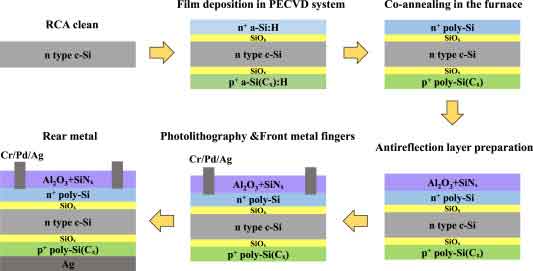Poly Silicon Carbide (SiC)
Poly Silicon Carbide Wafers for Research
A PhD. Candidate at a top research university requested a quote for the following:
"I am interested in poly SiC wafers. Do you supply these? Spec sheets for them?"
UniversityWafer, Inc. quoted:
"If you can accept,We can supply some 2'' or 4'' Single crystal wafer of which with large scale of poly SiC area,Means that,One single crystal SiC wafer,inside of it with some area of poly SiC area."
Please reference #269817 for pricing.
Get Your Quote FAST! Buy Online and Start Researching Today!
Recently Sold Poly SiC Wafers
1) 2’’ SiC Specification_N-type_2-4H-N
Material : High Purity Single Crystal Silicon Carbide
Polytype : Single-Crystal 4H
Orientation : off-axis 4° toward <11-20> ± 0.5°
Primary Flat : <11-20> +/-5 deg
Primary Flat length : 15.88 +/- 1.65 mm
Secondary Flat length : 8.0 +/- 1.65 mm
Diameter : 50.8 +/- 0.38 mm
Thickness : 350 +/- 25 um
TTV : </= 15 um
WARP : </= 25 um
Si-face Surface & Roughness : CMP Epi-ready polish,Ra<0.5nm
C-face Surface & Roughness : Optical polish,Ra<1.0nm
Dopant : Nitrogen (N-Doped)
Conduction Type : N-type
Resistivity : 0.013 ~ 0.028 Ohm.cm
Micropipe Density : </= 10 micropipes/cm2
Edge Exclusion : </= 1mm
Laser Marking : Back Side @ C-face
Package : Single wafer cassette vacuum sealed
2) 3’’ SiC Specification_N-type_3-4H-N
Material : High Purity Single Crystal Silicon Carbide
Polytype : Single-Crystal 4H
Orientation : on-axis <0001> ± 0.5°
Primary Flat : <11-20> +/-5 deg
Primary Flat length : 22.22 +/- 3.17 mm
Secondary Flat length : 11.18 +/- 1.52 mm
Diameter : 76.2 +/- 0.38 mm
Thickness : 350 +/- 25 um
TTV : </= 15 um
WARP : </= 25 um
Si-face Surface & Roughness : CMP Epi-ready polish,Ra<0.5nm
C-face Surface & Roughness : Optical polish,Ra<1.0nm
Dopant : Nitrogen (N-Doped)
Conduction Type : N-type
Resistivity : 0.013 ~ 0.028 Ohm.cm
Micropipe Density : </= 10 micropipes/cm2
Edge Exclusion : </= 2mm
Laser Marking : Back Side @ C-face
Package : Single wafer cassette vacuum sealed
What is Poly Silicon Carbide?
Polycrystalline silicon carbide is a material with unique electrical and thermo-mechanical properties. This  makes it a highly desirable candidate for structural and electronic applications. The need to understand the electrical properties and structure of polycrystalline silicon carbide has spurred research efforts. Researchers have used conductive atomic force microscopy to visualize defects in the material and study the nano-Schottky interface to reveal its intricate structure. The grains of polycrystalline silicon carbide exhibit a complex core-rim structure.
makes it a highly desirable candidate for structural and electronic applications. The need to understand the electrical properties and structure of polycrystalline silicon carbide has spurred research efforts. Researchers have used conductive atomic force microscopy to visualize defects in the material and study the nano-Schottky interface to reveal its intricate structure. The grains of polycrystalline silicon carbide exhibit a complex core-rim structure.
Polycrystalline silicon carbide is composed of silicon and carbon atoms in equal amounts. Each atom is bonded to four other atoms in a tetrahedral arrangement. This unique arrangement of atoms allows polysilicon carbide to be stacked in many different ways, including inversion.
Polycrystalline silicon is important for solar cells and other applications. It can be manufactured in a near-pure form and produces nearly as much energy as pure single crystal silicon. Its applications are far-reaching. In addition to solar panels, it is found in microwaves, radios, and watches. In fact, all electronic devices contain silicon.
It is also used for graphene production. Graphene can be grown on silicon carbide using various methods, including a process known as confinement controlled sublimation. This involves heating a silicon carbide chip with graphite and slowly releasing a vacuum over it. This method produces the best quality graphene layers, but other methods have been reported.
Video: Silicon Carbide Substrates Used in Biomedical Research
What are Poly Silicon Carbide Applications?
Poly-Silicon Carbide (Poly-SiC) substrate is a type of substrate material used in various applications in the field of electronics. Some of the common applications are:
-
Power electronics: Poly-SiC substrate is used in power electronics due to its high thermal stability, high electrical conductivity, and low thermal expansion coefficient. These properties make it an ideal material for high-power devices such as power transistors and diodes.
-
Optoelectronics: Poly-SiC substrate is used in optoelectronic devices due to its high thermal conductivity and high transparency to light in the visible and infrared regions.
-
Microelectronics: Poly-SiC substrate is used in microelectronic applications such as the fabrication of integrated circuits, due to its high thermal stability and low thermal expansion coefficient.
-
Aerospace and defense: Poly-SiC substrate is used in various aerospace and defense applications, such as high-temperature sensors, due to its high thermal stability and high electrical conductivity.
-
Medical electronics: Poly-SiC substrate is used in medical electronics applications, such as implantable devices, due to its biocompatibility and low thermal expansion coefficient.
Overall, the properties of Poly-SiC substrate make it a versatile material that can be used in a wide range of applications in the field of electronics.
